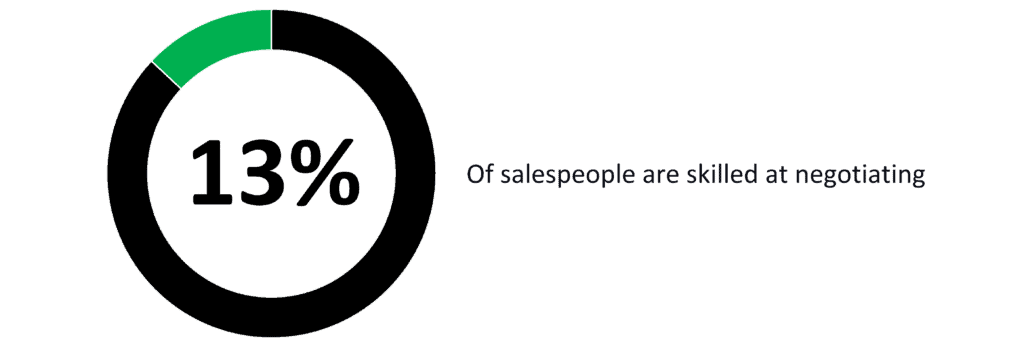Do your salespeople fight on behalf of the customer to get them a lower price rather than sell the value of your product/services? If this is the case, unfortunately, you are not alone. After interviewing 100 of our key clients, we found that over 63% of their salespeople were not comfortable negotiating or discussing money with customers. Additionally, they often fight with management when it comes to price changes, for fear of customer pushback.

Now, you may be asking, “How could that be? They work in sales! Isn’t it their job to sell?” While it is true that salespeople have an incentive to protect price integrity by not giving concessions (discounts, rebates, etc.), 55% of the same salespeople still cannot overcome their discomfort, even with the promise of increased compensation. In addition to fearing discussions about money, most salespeople also lack the confidence to sell value. This leads to a shift in focus from selling externally to instead selling internally.

It Gets Worse
Unfortunately, the bad news does not end there. Only 13% of salespeople are skilled at negotiating. You may be thinking to yourself, “They always negotiate with me and seem comfortable with it” but remember that you have a relationship with your salespeople while your customers do not. Your salespeople may care less about how you react versus how the customers react. They are probably also better able to play on your emotions / motivations. This is especially true in markets where there is less opportunity to make a sale due to empty/long sales pipelines or customer pullback as the salesperson will be worried that the opportunity will slip away if they do not give customers what they want. Internal management on the other hand, is always available for unending debates about what the company should do from a pricing perspective.

The Good News
Thankfully, there is a way to help your salespeople sell the value of your products/services and avoid giving out concessions. Here are the two key steps you should implement to avoid internal pricing debates:
1. Enhance your team’s ability to communicate the value of your offerings, ensuring value drivers are aligned with customer objectives
To effectively communicate the value of your offerings to customers, your salespeople must understand what customers value and why. Doing so will help focus the discussion on how your solution meets the needs of the customer, rather than on price. I find that preparing and asking the customer questions about what they value helps align how your offering meets their needs. This can essentially be leveraged via “The Cost of Failure” where you can highlight how better-off your customer is using your offering versus the competition. When customers discuss your value differentiators in their own words, they also often convince themselves of the superiority of your offerings and the inferiority of other offerings or inaction. By focusing on the financial and emotional impact of not choosing the right option, “The Cost of Failure” is highly effective at driving customers towards your offering.
2. Help your salespeople overcome their fears about money negotiations
Much of your salesperson’s fear around money is the result of deep-rooted beliefs, often caused by their upbringing. If they were taught that it was rude to discuss money, then it is no surprise they would not want to talk about money with customers for fear of being rude. Now, just telling a salesperson to get over it and give them a plan of attack may not be helpful. These people need training, and it may require helping them take an introspective look inside to understand why they are not comfortable talking about money.
Some effective sales training programs include conducting mock sales negotiations with different customer personas so they can learn how to address each unique objection accordingly. Another technique is helping your salespeople find or create a win-win result for both themselves and the customer. To do this, create scenarios where the salesperson is at a distinct disadvantage, forcing them to think on their feet to create a win-win situation. Make sure you help them check their assumptions and expand their solution possibilities to see what win-win scenarios could look like.
Practice Makes Perfect
When you implement these steps, remember that habits are hard to break, and the salesperson may revert to their discount demanding ways. You must continually remind them of the new process. I recommend asking questions instead of giving critiques to help them realize where they may have fallen short in terms of selling value with the prospect.
Practice makes perfect, especially when discussing money. By allowing your salespeople to repeat and reinforce the above steps, you are helping them better deal with customers in closing deals. Creating new habits will take time and effort, so be patient – the results will come.
If you would like Revenue Management Labs’ guidance on managing these difficult conversations, training your sales team, or creating powerful sales playbooks, get in touch today!
ABOUT THE AUTHOR Avy Punwasee is a Partner at Revenue Management Labs. Revenue Management Labs help companies develop and execute practical solutions to maximize long-term revenue and profitability. Connect with Avy at apunwasee@revenueml.com




